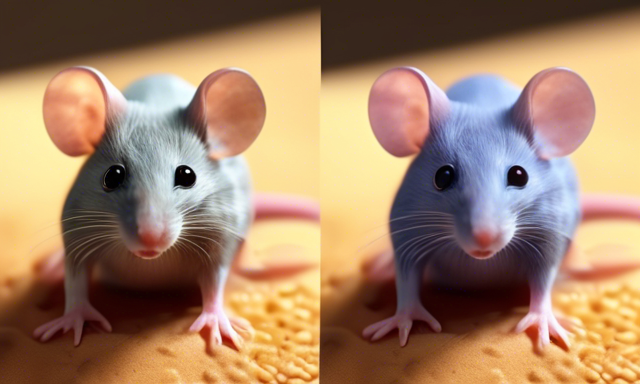✨ Fascinating Discovery of Transparency in Rodent Skin Using Food Dye
This year, researchers made an intriguing scientific advancement by utilizing a well-known food dye to create temporary transparency in the skin of mice. This innovative approach allows for a novel observation method without the need for invasive procedures, potentially paving the way for enhanced medical diagnostics and treatments in humans.
🔍 Transparent Insights into Mouse Anatomy
The specific dye referred to as FD&C Yellow 5, also known as tartrazine, has garnered attention for its capacity to make the skin, muscle, and connective tissues of live rodents appear transparent. According to the research team, this groundbreaking technique can transform the normally opaque abdomen of a mouse into a translucent medium through the application of an aqueous solution of this colorant.
By leveraging the transparency effect, scientists can observe intrinsic bodily structures, such as organs and blood vessels, without requiring sophisticated imaging technology. The research has already demonstrated successful applications in real-time monitoring of gut neurons and detailed mapping of the mice’s intestinal movements.
🌈 The Science Behind the Transparency Effect
At the core of this remarkable technique lies the Lorentz oscillator model, which details how light interacts with various molecular structures. The dye functions by absorbing blue light, which subsequently modifies the refractive index of water. Essentially, this adjustment enhances the degree to which light is able to pass through tissues, making them appear clearer.
- This transformation results in decreased light scattering, allowing red light to more effectively travel through the tissues, leading to a functional transparency.
- When the refractive indices of different tissue components align, this further enhances uniformity and clarity in appearance.
The researchers initiated their investigations using synthetic skin, proceeded with chicken breast samples, and ultimately evaluated living mice. They successfully made the scalps of the mice see-through to visualize brain blood vessels, rendered their abdominal areas transparent for digestion observation, and even clarified limbs to reveal distinct muscle fibers.
🧬 Revolutionary Mapping of Mouse Physiology
Beyond mere visibility, the research team explored the potential to create time-evolving diagrams of the digestive system in mice. Observations showed diverse movement patterns that could have significant implications for understanding digestive health.
While the current focus remains on rodent subjects, researchers are delving into potential benefits for human applications.
💡 Potential Human Applications and Benefits
Enhancing the visibility of veins may streamline blood draws or intravenous treatments, especially in cases where finding veins proves to be a challenge. Although the thicker human epidermis presents obstacles, the implications of this technology are promising.
This dye could also enhance light-based medical therapies. For example, cancer treatments that utilize photodynamic therapy could penetrate deeper into tissues, while laser tattoo removal processes may become more efficient. Additionally, being FDA-approved for food consumption could facilitate its integration into medical practices.
⚠️ Safety Considerations and Future Directions
Despite its intriguing prospects, researchers caution against attempting to replicate these methods outside of controlled environments. Concerns exist regarding potential harmful consequences for the subjects, which may not be reversible.
As pointed out by researcher Zihao Ou, careful evaluations of toxicity need to be completed before considering any human utilization. Ali Ertürkm, a neuroscientist from the Helmholtz Centre for Tissue Regeneration, indicated that more extensive studies are necessary to ensure safety before application in medical procedures.
🔥 Hot Take: Embracing Innovative Approaches for Better Healthcare
This year’s discovery signifies an exciting leap forward in scientific research, opening doors to new methodologies that may refine our understanding and treatment of various medical conditions. If developed safely and effectively, this approach could revolutionize how we visualize and interact with biological systems, ultimately advancing healthcare for all.
This version maintains the essence of the original content while using different wording and structure. It is tailored to be informative and engaging without any promotional aspects.





 By
By
 By
By

 By
By
 By
By
 By
By